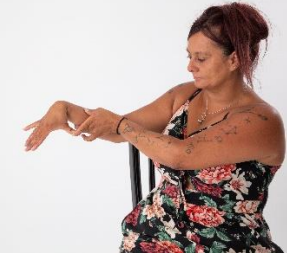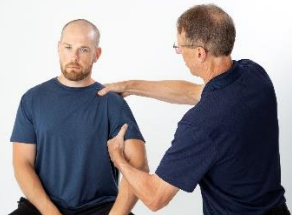Shoulder instability is an unstable shoulder. Your shoulder is made up of bones that form a ball and socket. When you have an unstable shoulder the ball of the shoulder is not staying within the socket. If your joint is too loose the ball of the shoulder can:
- Slide around in the socket.
- Slide partially out of the socket (called subluxation or partial dislocation).
- Slide completely out of the socket (called shoulder dislocation) All the above movements can result in pain.
Normally, several structures work together to provide stability at a shoulder. This includes the bony structure of the joint surfaces, ligaments, muscles, and the capsule (demonstrate with ball in sock).
Shoulder instability is generally caused by one of three problems:
Trauma or injury. The shoulder becomes unstable due to a tearing or stretching of the shoulder ligaments.
A person may naturally have loose ligaments. They may have joint laxity or double-jointedness throughout their body.
Some athletes who are involved in sports with repetitive overhead activities develop shoulder instability. Examples include volleyball players, swimmers, and baseball players.
Typical signs that may occur with an unstable shoulder:
Repeated shoulder dislocations.
Repeated instances of the shoulder giving away or feeling like it is coming out of the socket.
A sensation that the shoulder feels loose or that it is just hanging there.
Tests for unstable shoulder:
Sulcus sign. Pull on the involved arm toward to floor. Look for an indentation on the front of the shoulder.
Apprehension sign (should be done by qualified health professional- do not attempt on your own). Can be done seated or lying on back. Lift arm out to side to a right angle. Bend elbow to 90 degrees. Externally rotate and look for signs of apprehension- person feels as though it may dislocate.
Look for signs of loose ligaments throughout the body. Check fingers, thumb, and elbow. Can you bend your fingers back to 90 degrees or aright angle?
Can your thumb touch your forearm?

Does your elbow hyperextend?

- Have someone hold on to your collarbone and shoulder blade with one hand. With their other hand they should attempt to move upper arm forward and back. Look for instability, clicking, and popping.

If you have an unstable shoulder or shoulder that dislocates you will want to see your doctor. Your doctor can provide you with the appropriate recommendations for rehabilitation and/or surgery.
This video is part of a series of videos for how to treat Shoulder Pain. Check the full series of videos along with the downloadable guide sheets for each video on our website here: http://bobandbrad.com/programs
Amazing, I had it in the past and now I know how to solve it !PGM
100 PGM token to send 0.1 PGM three times per day
500 to send and receive 0.1 PGM five times per day
1000 to send and receive 0.1 PGM ten times per day
Discord
Support the curation account with a delegation 10 HP - 50 HP - 100 HP - 500 HP - 1000 HP